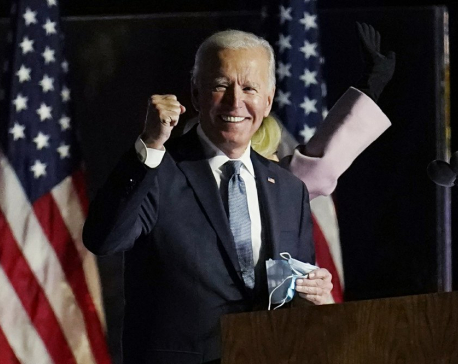
OR
Opinion
Trade and Investment Policy in South Asia
Published On: February 28, 2023 08:00 AM NPT By: Hari Prasad Shrestha

During the 1980s, the economy of China and India were almost at the same level in terms of GDP, per capita GDP and growth rates with coequal population. However, within a 30-year period, China dramatically surpassed India in the growth rate by a huge margin and per capita GDP five times that of India. The reason behind China’s high performance was its willingness to let foreign investors access its assets, labor and non-traded infrastructure at a significantly lower cost than its Indian competitor. Moreover, the decision-making process to approve foreign investment in China was simple and fast compared to the lengthy process and long deliberations in India.
In South Asia, India is the largest Foreign Direct Investment (FDI) receiving country with 90% of the quantum of FDI of the region being concentrated here. And the amount of FDI remains woefully minimal in other countries of the region. The top four recipients of FDI in South Asia are India, followed by Pakistan and Bangladesh (USD 2 billion each) and Sri Lanka (USD 1 billion). The South Asian countries have been largely unsuccessful in attracting FDI.
South Asia is the largest populated region where the middle class is fast growing. It has an impressive array of natural resources. With an attractive growth market and strategic location, it has the largest skilled manpower and professional managers available at competitive costs. The ‘macro’ nature of the region signifies optimism for trade and investment.
Despite its large population and huge market, the intra-regional investment scenario in South Asia is below satisfactory level. The region has high potential to increase trade but trade within the region accounts for less than 10% of the region’s global trade. It is the least integrated region in the world, dwarfed by East Asia’s 35% and Europe’s 60%. It’s 20% cheaper for India to trade with Brazil than with its neighbor Pakistan, the World Bank report says.
The physical infrastructures of most of the SAARC countries are not well developed. Border and customs are inefficient with congested border crossings. Moreover the circuitous routes to enter markets of the region have caused high costs to the traders and investors. There are not adequate trade agreements among the countries of the region. There are also problems with trade restrictions between some SAARC countries. Moreover, internal strife, violent exchange rate shifts, shifts in business regulations, non-tariff barriers and quota imposition, standards issue of the product, natural risk of flood, drought and tsunami etc have also been the barriers to trade and investment.
The major sectors for trade and investment in the SAARC region are information-technology (IT), pharmaceuticals, biotech, microbiology, sophisticated metallurgy, manufacturing items, infrastructure etc. But SAARC lacks brand recognition. Foreign investment, especially FDI, not only supplements domestic investment resources but also acts as a source of foreign exchange and can relax the balance of payment constraints on growth. Considering the economic benefits and importance of FDI for promoting economic growth, most of the countries in the region have formulated wide-reaching changes in national policies to attract FDI.
FDI is open in most of the sectors and mostly no government approval is required in all the countries of the region. There is equal treatment to foreign and local investors. Government ensures legal protection to foreign investment against nationalization and expropriation and allows repatriation of proceeds from sales of shares and profit. Significant investment incentives exist in most of the countries. Except Bhutan, SAARC countries have bilateral trade agreements with most global countries. A South Asian Free Trade Agreement (SAFTA) is being eyed for coordinated regional trade. Despite the existence of the SAFTA, trading with neighbors is far from being free. This is mainly due to the long list of products that are not included under the concessional tariff of SAFTA.
FDI inflows to Bangladesh remained relatively satisfactory at $1.5 billion. Export structure of garments of various kinds and export of frozen food (shrimps and prawns) of Bangladesh are well recognized in the international market. As one of the most important foreign investors and the largest producer of natural gas in Bangladesh, Chevron (United States) invested $500 million in the Bibiyana Expansion Project and is prepared to invest another $650 million in Petrobangla, the local state-owned oil company. FDI inflows in Bangladesh in recent decades have been able to increase GDP by raising the economy’s output capacity and employment level.
Sri Lanka also offers one of the most liberal FDI regimes in South Asia. FDI was a key determinant for Sri Lanka’s economic growth after 1977 and FDI flow from China rose as well. A joint venture between two local companies and China Merchants Holdings (International) Company has invested $500 million in Colombo International Container Terminals, the country’s largest foreign investment project. However, as a result of haphazard and miscalculated external investment, Sri Lanka is facing a problem of severe debt traps.
The impact of output growth in attracting FDI is relatively stronger in India. FDI inflows to India reached $84.84 billion. In terms of sectoral composition, manufacturing is gaining strength, as policy efforts to revitalize the sector are sustained, including for instance the launch of the “Make in India” Initiative in mid-2014. The major sources of FDI in India are Japan, the United States and the Republic of Korea. Pakistan has made a good base for the manufacturing industry. FDI inflows to Pakistan increased by 31 per cent to $1.7 billion as a result of rising Chinese FDI flow in services. FDI has contributed significantly to the development of human resources, capital formation and improvement of organizational and managerial skills in Pakistan.
In spite of significant liberalization of the economy, foreign investment regime and providing attractive investment incentives, Nepal’s achievements in attracting FDI is far from satisfactory levels and national expectations. FDI in Nepal has failed to make a significant contribution to the productivity growth of the manufacturing sector. The return of Dangote Cement of Nigeria with an investment of US$550m was an example of a lack of friendly investment climate in Nepal. However, in recent years Nepal began to attract some FDI in the infrastructure and industrial sectors. Bhutan's hydropower sector has received considerable Indian investment. The Maldives has been successful in attracting FDI in its huge tourism industry. Afghanistan is in the process of reforming its policy to attract FDI for its reconstruction and growth.
In total, FDI has a positive impact on export growth through its positive spillovers for South Asian countries. It needs to improve its domestic investment, exports and infrastructure facilities, along with more foreign investment, to achieve higher growth.
South Asian policymakers realize that credible efforts for economic reforms in the region must involve an upgrading of technology, scale of production and linkages to an increasingly integrated globalized production system chiefly through the participation of Multinational Corporations (MNCs). Reduced trade frictions could increase India-Pakistan trade from less than $3 billion to $20 billion and there is a high possibility to raise export from Bangladesh to India by 300%.
South Asia can achieve better integration and boost its regional trade. To go forward, it is urgently needed to reduce tariffs and non-tariff barriers, no quota imposition, and leverage private and intergovernmental investment. Moreover, investing in efficient connectivity and border crossings and liberalizing services such as logistics, shipping, air travel etc are also very essential. Apart from policy reforms, other institutional factors like business freedom, investment freedom, trade freedom, financial freedom, fiscal freedom, etc of the host country may also affect foreign investment.
You May Like This

What Biden's victory means for South Asia and Nepal
The US policy towards Nepal generally remains unchanged by the change of guard in the White House. Yet, Nepal will... Read More...

China outrunning India in Nepali politics, India mulling a new strategy
With an unprecedented activeness of China, India seems preparing to counter it. India's Nepal Affairs expert and retired Indian Army... Read More...

Nepal women's national football team face India in Olympic Asian Qualifiers on Thursday
KATHMANDU, Nov 8: Nepal women's national football team will play their first match against India on Thursday in the Olympic tournament. ... Read More...










Just In
- NRB introduces cautiously flexible measures to address ongoing slowdown in various economic sectors
- Forced Covid-19 cremations: is it too late for redemption?
- NRB to provide collateral-free loans to foreign employment seekers
- NEB to publish Grade 12 results next week
- Body handover begins; Relatives remain dissatisfied with insurance, compensation amount
- NC defers its plan to join Koshi govt
- NRB to review microfinance loan interest rate
- 134 dead in floods and landslides since onset of monsoon this year









Leave A Comment